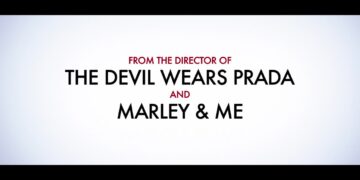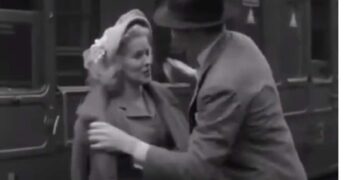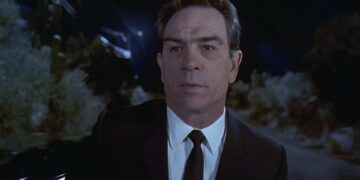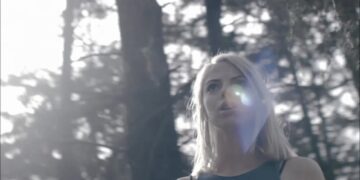Dilbert, created by Scott Adams, is a widely popular comic strip that offers a satirical take on the corporate world. The strip first appeared in newspapers in 1989 and quickly gained a strong following due to its clever humor and relatable characters. In 1999, Dilbert made the transition from the panels to the small screen with an animated TV series that brought the workplace antics to life. In this article, we will delve into the storyline and explore the differences between the comic and the TV series, providing an in-depth analysis of both mediums.
Brief Summary of Dilbert – The Comic
Dilbert – The Comic revolves around the life of the titular character, Dilbert, an engineer working in a nameless corporation. Dilbert is often portrayed as an average, well-intentioned employee who finds himself trapped in an absurd and dysfunctional work environment. The comic strip delves into Dilbert’s daily struggles as he deals with clueless managers, convoluted office policies, and absurd bureaucracy. While Dilbert is the central character, other recurring characters, such as his dog Dogbert and his co-worker Wally, play significant roles in driving the humor and satire.
Brief Summary of Dilbert – The TV Series
Dilbert – The TV Series brings the world of Dilbert to animated life. The show closely follows the comic strip’s premise and characters, offering a visual representation of the corporate mayhem depicted in the panels. With its unique animation style and voice acting, the TV series enhances the comedy and absurdity found in the comic. Each episode presents Dilbert’s daily struggles in the workplace, showcasing his attempts to navigate through the challenges of corporate life while maintaining his sanity. The TV series expands on some of the comic strip’s storylines and introduces additional characters, adding depth to the Dilbert universe.
Exploring the Storyline and Differences Between the Comic and TV Series
While both the comic and the TV series revolve around Dilbert’s experiences in the corporate world, there are notable differences between the two mediums. In the comic strip, the storylines are often condensed into a few panels, relying on concise dialogue and visual gags to deliver the humor. On the other hand, the TV series allows for longer and more intricate storylines, utilizing the medium’s visual and auditory capabilities to enhance the comedic moments.
One significant difference lies in the portrayal of certain characters. The comic strip mainly focuses on Dilbert and his immediate colleagues, while the TV series introduces a wider range of characters, including recurring guest stars. These guest stars, often portrayed by famous actors, bring their unique comedic talents to the show, adding an extra layer of entertainment. Additionally, the TV series explores the personal lives of the main characters more extensively, offering a deeper understanding of their motivations and relationships.
Parent Guide to Dilbert – Is It Suitable for Children?
Dilbert, both the comic and the TV series, is primarily intended for adult audiences. The humor often revolves around workplace satire, which may not be easily understood or appreciated by younger viewers. The themes and jokes in Dilbert frequently touch on corporate politics, office dynamics, and adult-oriented humor. While Dilbert may be enjoyed by teenagers and mature adolescents, parents should exercise caution and consider the content’s appropriateness for their children, taking into account the show’s satirical nature and adult themes.
When and Where Does Dilbert Take Place?
Dilbert’s world is a reflection of the modern corporate landscape, with its absurdities and idiosyncrasies. The setting of the comic and the TV series is intentionally vague, allowing the humor to be relatable to a wide range of workplaces. Dilbert’s workplace is often depicted as a generic office space, with cubicles, meeting rooms, and a cafeteria. The lack of specific location and time period gives Dilbert a timeless quality, allowing its humor to remain relevant even years after its creation.
Who’s Who in Dilbert – Introducing the Main Characters
Dilbert features a diverse cast of characters, each with their distinct personalities and quirks. Let’s take a closer look at some of the main characters who drive the humor and storyline of the comic and the TV series:
- Dilbert: The protagonist and the embodiment of the average employee trapped in a corporate environment. Dilbert is often seen as intelligent but constantly frustrated by the illogical decisions and policies of his superiors.
- Dogbert: Dilbert’s pet dog, who possesses a cynical and manipulative nature. Dogbert often provides witty commentary on the absurdities of the corporate world and occasionally schemes to exploit them for personal gain.
- Wally: Dilbert’s co-worker and friend, Wally is known for his laziness, cunningness, and ability to navigate the corporate system with minimal effort. He often serves as a source of comic relief and a contrast to Dilbert’s more earnest approach to work.
- Alice: A no-nonsense, highly competent engineer who often finds herself combating the incompetence and sexism prevalent in the workplace. Alice is a strong-willed character who adds a touch of realism and empowerment to the Dilbert universe.
Guest Stars in Dilbert – Notable Appearances
Throughout its run, Dilbert – The TV Series featured several notable guest stars who lent their voices to various characters. These guest appearances added a fresh dynamic to the show and further enhanced the comedy. Some of the memorable guest stars include:
- Jason Alexander as Catbert: Known for his role as George Costanza in Seinfeld, Alexander brought his distinctive comedic timing to the role of Catbert, the evil director of human resources.
- Jerry Seinfeld as himself: The renowned comedian made a guest appearance as himself in an episode that hilariously satirized stand-up comedy and the entertainment industry.
- Michael McKean as the Pointy-Haired Boss: McKean, best known for his role in This Is Spinal Tap, lent his voice to Dilbert’s inept and clueless boss, adding a touch of absurdity and humor to the character.
These guest stars, along with the talented voice cast of the TV series, brought the Dilbert universe to life and contributed to its enduring popularity.
Memorable Quotes from Dilbert
Dilbert – The Comic and TV Series are filled with witty and memorable quotes that capture the essence of workplace satire. Here are a few notable quotes that have become fan favorites:
- “I’m not anti-social; I’m just not user-friendly.”
- “Change is good. You go first.”
- “I can please only one person per day. Today is not your day. Tomorrow isn’t looking good either.”
- “I don’t have an attitude problem. You have a perception problem.”
These quotes, among many others, showcase the sharp wit and cynicism present in Dilbert, resonating with audiences who have experienced the frustrations of the corporate world firsthand.
The Adam Cohen Soundtrack – A Closer Look at the Music of Dilbert
The TV series Dilbert featured a catchy and memorable soundtrack composed by Adam Cohen. The music perfectly complemented the show’s humor and tone, enhancing the comedic moments and adding depth to the storytelling. Cohen’s eclectic compositions ranged from quirky and whimsical tunes to dramatic and suspenseful melodies, capturing the essence of Dilbert’s world. The soundtrack became an integral part of the TV series, contributing to its unique charm and further immersing viewers in the satirical corporate landscape.
Curiosities and Fun Facts About Dilbert
Dilbert has amassed a dedicated fanbase over the years, and with such popularity comes a wealth of curiosities and fun facts surrounding the comic and TV series. Here are a few intriguing tidbits about Dilbert that may surprise even the most dedicated fans:
- Dilbert’s creator, Scott Adams, worked in the corporate world himself, drawing inspiration from his own experiences and observations.
- The Dilbert comic strip has been translated into over 25 languages, attesting to its global appeal and relatability.
- Dilbert’s iconic hair, or lack thereof, was inspired by Adams’ own hairstyle.
- The Dilbert TV series received critical acclaim for its accurate portrayal of office dynamics and corporate culture.
These curiosities offer a glimpse into the fascinating world of Dilbert and its enduring impact on popular culture.
Tips for Cosplay and Dressing Like Dilbert Characters
For fans who want to pay homage to their favorite Dilbert characters, cosplay provides an excellent opportunity to bring the workplace satire to life. Here are a few tips for cosplaying as Dilbert characters:
- Dilbert: Dress in business casual attire, such as a white dress shirt, a tie, khaki pants, and round glasses. Consider adding a Dilbert-themed accessory, like a Dilbert tie or a Dilbert-themed coffee mug.
- Dogbert: Dress in a black suit or black clothing, and add a pair of dog ears or a dog mask to complete the look. Don’t forget to adopt a cynical and smug expression!
- Wally: Embrace the lazy and nonchalant vibe by wearing comfortable attire, such as sweatpants and a casual t-shirt. Carry around a coffee mug and adopt a laid-back demeanor.
- Alice: Dress in professional attire with a touch of fierceness. Wear a pantsuit or a skirt suit, and accessorize with assertive accessories like a nameplate or a clipboard.
These tips will help fans capture the essence of their favorite Dilbert characters and bring the workplace humor to life.
Scott Adams – A Biography and Overview of His Other Works
Scott Adams, the creator of Dilbert, has had a prolific career as a cartoonist and author. Born on June 8, 1957, in Windham, New York, Adams initially pursued a career in the corporate world before turning to cartooning full-time. In addition to Dilbert, Adams has written numerous books on various topics, including humor, business, and personal development. Some of his notable works include:
- “The Dilbert Principle” (1996): A best-selling book that humorously explores the absurdities and inefficiencies of corporate life.
- “How to Fail at Almost Everything and Still Win Big” (2013): In this autobiographical work, Adams shares his insights on success, failure, and personal development.
- “Win Bigly: Persuasion in a World Where Facts Don’t Matter” (2017): Adams delves into the art of persuasion and its role in politics and everyday life.
Adams’ unique blend of humor and astute observations has made him a respected figure in the world of satire and comedy.
The Dilbert Remake, Sequel, and Spin-Off Projects
While the TV series Dilbert concluded in 2000, there have been discussions and rumors of potential remakes, sequels, and spin-offs over the years. Fans have eagerly speculated about the possibility of returning to Dilbert’s world and exploring new storylines and characters. While no official announcements have been made, the enduring popularity of the franchise leaves the door open for future projects that could revive the satirical workplace comedy.
Scott Adams and Larry Charles – Exploring Their Other Media Collaborations
Scott Adams’ creative talents have extended beyond Dilbert, leading to collaborations with other notable figures in the entertainment industry. One such collaboration was with Larry Charles, a renowned writer, director, and producer known for his work on shows like Seinfeld and Curb Your Enthusiasm. Adams and Charles joined forces to create the animated TV series “Dilbert” and brought their unique comedic sensibilities together, resulting in a successful adaptation of the comic strip.
Similar Media to Dilbert – Recommendations for Fans
If you’re a fan of Dilbert and are looking for similar media that captures the humor and satire of the workplace, here are a few recommendations:
- “The Office” (US/UK): This mockumentary-style sitcom brilliantly satirizes the everyday absurdities of office life, with a diverse cast of characters navigating the corporate world.
- “Parks and Recreation”: Set in the Parks and Recreation Department of the fictional town of Pawnee, this comedy series offers a hilarious take on bureaucracy and government work.
- “Office Space”: This cult classic film takes a comedic look at the mundane and soul-crushing nature of office jobs, resonating with anyone who has ever felt trapped in a cubicle.
These recommendations will provide fans of Dilbert with similar humor and relatable workplace scenarios to enjoy.
Scott Adams’ Other Notable Works
In addition to Dilbert, Scott Adams has authored several other notable works that showcase his diverse range of talents. Some of his other works include:
- “God’s Debris: A Thought Experiment” (2001): In this philosophical novella, Adams explores concepts of religion, science, and the nature of reality.
- “Stick to Drawing Comics, Monkey Brain!: Cartoonist Ignores Helpful Advice” (2007): A collection of essays and blog posts by Adams, offering insights into his creative process and experiences as a cartoonist.
- “How to Lose at Poker” (2012): Adams shares his strategies and observations on poker, providing valuable insights for both beginners and experienced players.
These works showcase Adams’ versatility as an author and his ability to engage readers with his unique perspectives.
Book Club Questions for Dilbert Enthusiasts
For book clubs or discussion groups interested in exploring Dilbert’s world and its themes, here are a few questions to spark meaningful conversations:
- How does Dilbert satirize the corporate world, and what elements of the workplace resonate with you the most?
- Discuss the portrayal of gender dynamics in Dilbert. How does the comic and the TV series address gender-related issues in the workplace?
- How does Dilbert tackle the themes of power and hierarchy within organizations? Are there any instances where it offers insights or solutions to these issues?
- Explore the role of humor as a coping mechanism in Dilbert. How does the comic strip and the TV series use comedy to address the frustrations of the workplace?
- Discuss the impact of Dilbert on popular culture and its enduring popularity. Why do you think it has remained relevant for so many years?
These questions will encourage lively discussions and provide a deeper understanding of the themes and messages present in Dilbert.
A Travel Guide to Visiting Dilbert Locations
For dedicated Dilbert fans, embarking on a pilgrimage to visit the real-life locations that inspired the comic strip can be an exciting and fulfilling adventure. Here is a comprehensive travel guide to help you plan your Dilbert-themed trip:
1. When Takes Place
Dilbert is set in a contemporary office environment, which means the locations you’ll be visiting are primarily office buildings. As such, there isn’t a specific time period associated with the comic strip. However, it is important to note that the strip began in 1989 and continues to this day, so the settings and references may have evolved over time.
2. Locations
- Silicon Valley, California: The birthplace of Dilbert, Silicon Valley is a must-visit for any fan. Explore the tech-savvy atmosphere that inspired Scott Adams and immerse yourself in the vibrant culture of innovation.
- Corporate Headquarters: Many Dilbert comics depict the daily grind of working in a corporate office. Consider visiting the headquarters of some well-known companies to experience the ambiance and gain a deeper understanding of the strip.
- Coffee Shops: Dilbert often seeks solace and inspiration in his local coffee shop. Look for cozy cafes or bustling coffeehouses in your area to recreate the atmosphere of Dilbert’s favorite hangout spot.
Conclusion
From its humble beginnings as a comic strip to its successful transition onto the small screen, Dilbert has captivated audiences with its humorous take on office life. Scott Adams’ wit and keen observations have made Dilbert a beloved and enduring creation. Whether you’re a fan of the comic strip, the TV series, or both, exploring the storyline and differences between the two mediums can offer a fascinating glimpse into the evolution of Dilbert.
Whether you’re planning a Dilbert-themed trip, hosting a book club, or simply enjoying the comic strip, Dilbert continues to entertain and inspire with its relatable characters and satirical humor.













